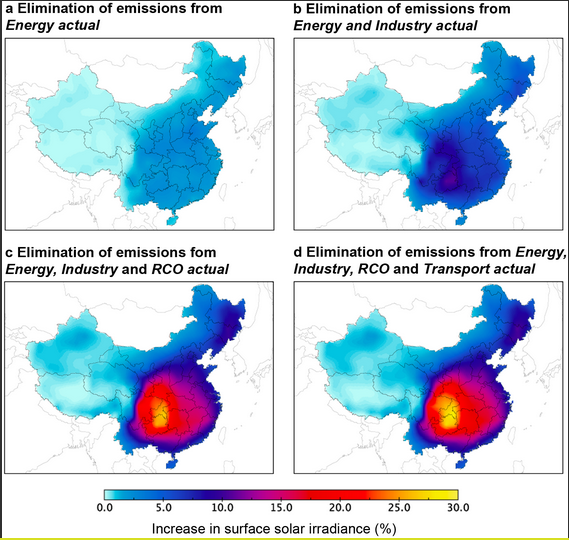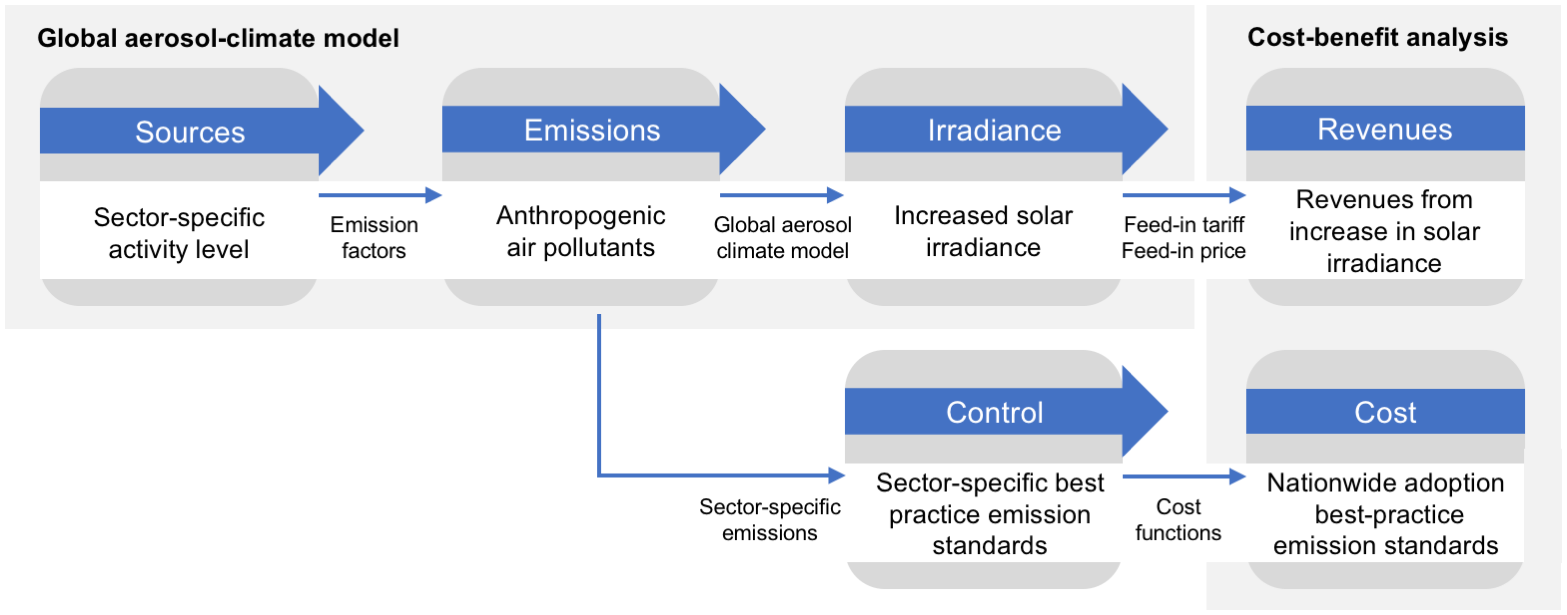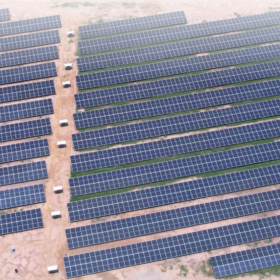From pv magazine Global
Researchers from the Climate Policy group at ETH Zurich have published a new study, Blue skies over China: The effect of pollution-control on solar power generation and revenues in the journal Plos One.
In it, they state that completely eliminating emissions from the power, transport, industry and household sectors would allow solar PV systems in China in 2040 – those currently installed plus new ones to that date – to generate an extra 85-158 TWh of electricity per year.
“The additional production would be at least one third greater than Switzerland’s current electricity requirements and would generate up to 10.1 billion US dollars more for the Chinese electricity industry from solar power generation,” state researcher Mercè Labordena and her colleagues.

Going into more detail, and looking at the Chinese solar sector in 2016, the researchers say that the elimination of emissions would have increased PV generation by 10 TWh at that time. Revenues meanwhile, would have been boosted by an extra US$1.4 billion.
“This amount is equal to the economic losses from the curtailment of solar power as a result of the grid instability experienced in the same year. By 2040, the revenues from increased solar PV generation could reach up to US$6.9 billion/year for a discount rate of 5% and when the FiTs decrease over time, and up to US$10.1 billion/year for the same discount rate but for FiTs the same as in 2017,” they calculate.
To make their assumptions, the researchers used the global aerosol-climate model ECHAM6-HAM2 with the bottom-up emissions inventory from the Community Emission Data System.
In addition to the increased energy output and savings, the researchers find that solar radiation would increase by an average of 11% nationwide – regional variations would occur, naturally, with Beijing seeing an increase of 8% compared to 26% in central provinces – thus allowing solar cells to generate one tenth more electricity.
Significant investment
Air pollution is said to affect solar power generation in three ways: (i) particle matter, which accumulates on the panels; (ii) aerosol particles, which interact in ways that scatter or absorb solar radiation; and (iii) cloud formation caused, for example, by the reaction of SO2 with other pollutants, which can increase cloud reflectivity and lifetime, and decrease the solar radiation reaching the Earth’s surface.
While cleaning the air requires significant investment, the researches calculate that the revenues from increased solar PV generation could cover 13-17% of the associated costs. “Our figures could be good news for investors,” says Labordena, adding, “If the air were free of pollution, their investments would pay off more quickly, freeing up money for the further expansion of photovoltaics.” She says that solar investors would benefit the most from air pollution control measures on China’s east coast, where the expansion of PV is fastest.
In a seperate study in June, researchers at the Duke University, in cooperation with colleagues at the Indian Institute of Technology-Gandhinagar and the University of Wisconsin at Madison, found that the accumulation of airborne particles on solar panels could cut energy output by more than 25% in some parts of the world, including China and India, where air pollution is extremely high.
Harmful
Harmful particulate matter, including soot, sulfur dioxide and nitrogen oxides, cause massive damage to health. Indeed, the World Health Organisation estimates that 1.6 million premature deaths are caused by air pollution per year in China, and over 7 million globally.
As a result of health impacts and forgone labor productivity, say the ETH Zurich researchers, China’s GDP decreases by up to 11%. “This value is increasing as China becomes more urbanized and its industrial production increases,” they find.
Despite this, they say it is difficult to quantify the monetary effects of these effects, thus making it hard to justify expensive air pollution controls. However, recent aerosol modeling, using satellite-derived data, has quantified the effects of air pollution on surface solar irradiance.
“We disaggregate the effects on a sectoral basis using actual anthropogenic emissions data coupled to a global aerosol-climate model. This then allows us to quantify the economic benefits associated with different clean-air policies and their costs,” they say.
Overall, China is found to be the biggest emitter of anthropogenic air pollutants globally. This has led the government to introduce some policies to combat emissions, including the goal to consume 20% of its primary energy from non-fossil sources by 2030. However, the scientists argue that while some success has been seen, there is still room for improvement.
This content is protected by copyright and may not be reused. If you want to cooperate with us and would like to reuse some of our content, please contact: editors@pv-magazine.com.










By submitting this form you agree to pv magazine using your data for the purposes of publishing your comment.
Your personal data will only be disclosed or otherwise transmitted to third parties for the purposes of spam filtering or if this is necessary for technical maintenance of the website. Any other transfer to third parties will not take place unless this is justified on the basis of applicable data protection regulations or if pv magazine is legally obliged to do so.
You may revoke this consent at any time with effect for the future, in which case your personal data will be deleted immediately. Otherwise, your data will be deleted if pv magazine has processed your request or the purpose of data storage is fulfilled.
Further information on data privacy can be found in our Data Protection Policy.